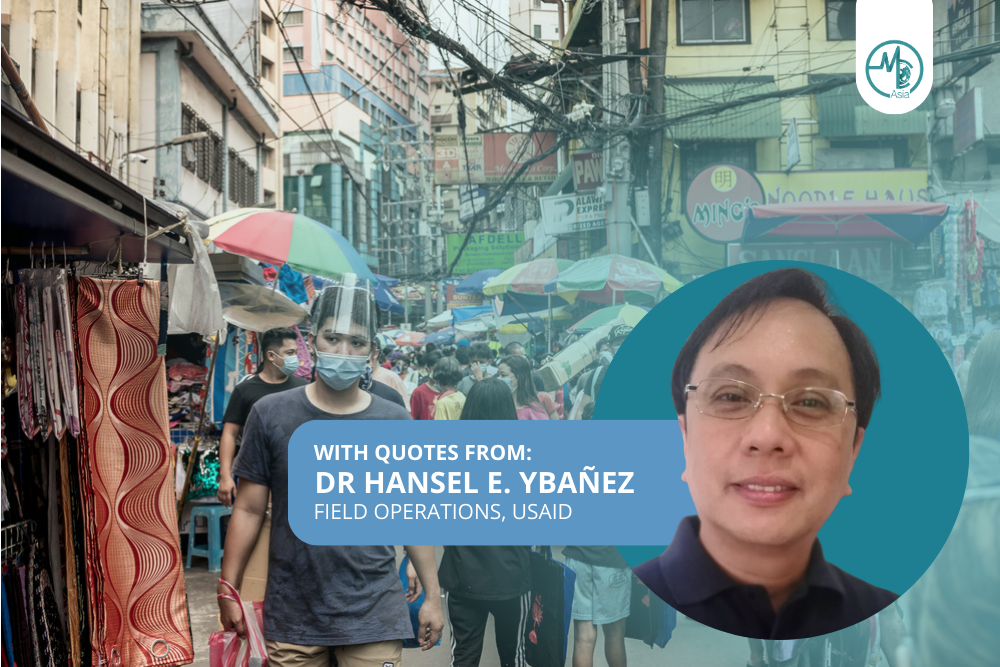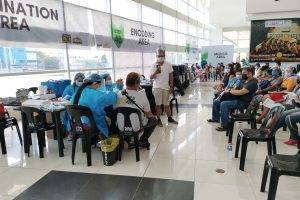In the shadow of the global COVID-19 pandemic, another health crisis persists in the Philippines: tuberculosis (TB).
The country, grappling with an alarming TB burden, has witnessed a stark 37 percent decline in TB case notifications in 2020 due to the pandemic. However, the U.S. Agency for International Development (USAID) is stepping in with crucial support. They have a team in the Philippines actively working with the government and stakeholders in the battle against Tuberculosis. We also spoke with Dr. Hansel E. Ybañez, field operations manager for USAID TB Platforms-NCR.
The Human Cost of TB in the Philippines
TB continues to claim about 70 Filipino lives daily, underscoring the severity of the health threat. Dr Ybañez explained what TB is. He stated, “It is a bacterial infectious disease caused by Mycobacterium tuberculosis. It primarily affects the lungs but can also affect other parts of the body. TB is transmitted from person to person through the air when an infected individual coughs, sneezes, or talks. It is a treatable and curable disease, but if left untreated, it can be fatal.”
Despite being a curable disease, TB caused approximately 1.6 million deaths globally in 2021. The Philippines notably ranks as the fourth-largest contributor to the global TB burden, accounting for 7 percent of total cases. Health Officer Maria Rosario Vergeire emphasised the critical scenario in a statement in March, pointing out an increase in TB incidence from 554 to 650 cases per 100,000 individuals from 2020 to 2021.
Projections and Regional Disparities
Forecasts suggest a dire escalation. The data expects TB incidence potentially soaring by 130 percent and related deaths by 170 percent by 2025. While some regions like the National Capital Region show promising progress in treatment enrollment, areas such as the Bangsamoro Autonomous Region in Muslim Mindanao and the Cordillera Administrative Region struggle significantly. This highlights the uneven healthcare access across the country.
Socio-Economic Impact and the Road Ahead
TB’s vicious cycle predominantly affects impoverished communities. In these areas, risk factors like malnutrition, crowded living conditions, and comorbidities like HIV and diabetes are rampant. The economic strain of TB treatment exacerbates poverty. This leads to increased unemployment and financial instability among affected populations.
Recognising TB as a significant health equity issue, Vergeire emphasised the need for a comprehensive strategy encompassing improved healthcare access and enhanced living conditions. The Philippine Acceleration Plan for TB adopts a holistic approach, mobilising government, healthcare systems, and societal efforts to tackle the TB crisis collaboratively.
Pandemic Impact & USAID Assistance
The COVID-19 pandemic has significantly disrupted global health systems, with critical TB control programs being no exception. This disruption is evident in the Philippines. TB case notifications plummeted, raising fears of losing ground in the hard-fought battle against the disease. USAID hopes to help the fight, with both financial and on-ground support.
Dr Ybañez shared that in his role at USAID, “technical assistance is provided and activities from our workplan are being implemented. We are involved in diagnosing, treating, and preventing tuberculosis, and my responsibilities would revolve around ensuring the efficient and effective functioning of these operations.”
International Collaboration and Strategy
In synergy with global efforts, such as those by the Global Fund to Fight AIDS, Tuberculosis, and Malaria, USAID’s intervention is a beacon of hope. The recovery plan aligns with the United Nations High-Level Meeting on TB targets. Therefore, it underscores the global commitment to curb this public health threat.
USAID’s financial aid and strategic support signify a robust international alliance against TB. It aims to fortify detection, treatment, and prevention measures in the Philippines. This collaborative endeavour marks a critical step towards mitigating TB’s impact, safeguarding public health, and striving for equity in healthcare access amidst the ongoing challenges.
Dr Ybañez added, “By providing financial and technical support, capacity building, and advocacy efforts, USAID helps the Philippines address the challenges associated with TB control and make progress in reducing the burden of tuberculosis in the country. This collaborative approach is vital in achieving sustainable and long-term success in TB reduction efforts.”
Conclusion
As the world grapples with multiple health crises, the fight against TB remains paramount. This is particularly important in high-burden countries like the Philippines. Collaborative efforts spearheaded by organisations like USAID highlight the global solidarity and concerted strategies essential in overcoming such pervasive health challenges.
This article is facilitated by Advanced Abilities.














